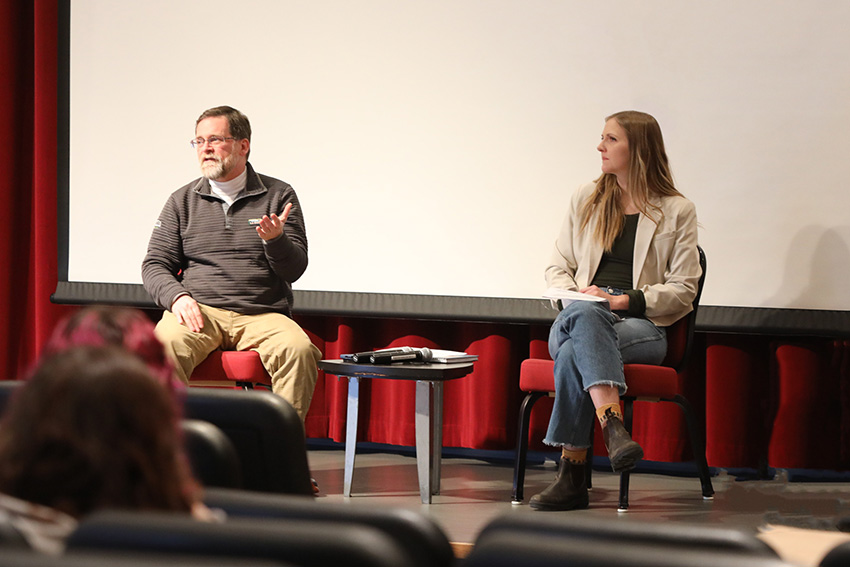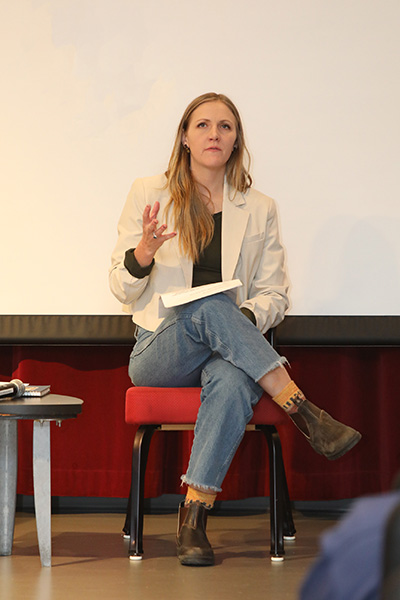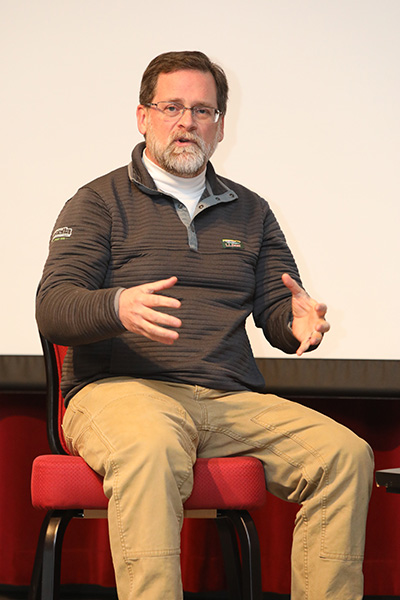- Apply
- Visit
- Request Info
- Give
Combatting Connecticut’s waste crisis
Eastern students learn ways to reduce environmental impact
Written by Marcus Grant
Published on February 01, 2024

Connecticut is currently in a waste crisis that has great impacts on the cost of waste removal and the state’s environmental footprint. Eastern Connecticut State University students gathered in the Student Center Theatre recently to listen to experts share the impact of improper waste disposal and learn ways to combat environmental issues.
Connecticut's major waste-to-energy facility, located in Hartford, closed in July 2022, said Marc Morgan, accounts manager for Casella Waste Systems, Inc., the company responsible for waste collection in the Windham/Willimantic area. With this closure, Connecticut has fewer places to send its waste. Connecticut is not alone in losing space and facilities to dispose of waste, however. States across the Northeast are in competition for capacity to manage their waste, driving up the state’s cost of sending excess waste elsewhere.
Residents can help, however. Chelsea Cherrier, food access manager at the Willimantic organization CLiCK explained that the largest component of landfills is food waste. This is especially problematic as food waste produces methane gas when it is in landfills.

CLiCK connects local farmers and chefs and brings locally grown farm-fresh foods into the Willimantic community. This is done to encourage the “shift from an unsustainable, socially and environmentally destructive global food system to one that is just, locally based, sustainable and healthy for all,” said Cherrier.
Instead, CLiCK encourages composting food waste. Composting allows organic materials to break down naturally, releasing carbon dioxide that can be absorbed by plants. Compost is also usable as soil fertilizer, allowing people to reuse their food scraps and reducing reliance on chemical-filled fertilizers and pesticides. Widespread use of nutrient-dense compost increases soil filtration, helping combat flooding and erosion.
Eastern, working to counter the University’s impact on the environment, has partnered with CLiCK, introducing a pilot program for composting the food waste from some dorms on campus.
“Imagine it,” Cherrier said, “if each resident is producing one to two pounds of food waste each month. Multiplied by the 200 residents in each of these buildings, it has the potential to have huge impacts on the environment.”
Combating excessive waste also requires self-examination. Cherrier and Morgan encouraged students to assess how much waste they go through every day, week, month. It all adds up, they said.
“Our definition of waste has changed,” said Morgan. “It used to be something that has expended its value — something that could no longer be fixed. Now, we consider anything we don’t want anymore to be disposable. Instead, it’s important to ask ourselves, ‘Do I need something new?’”

In addition to reducing consumption or buying in excess, Cherrier and Morgan noted the importance of recycling. To divert waste from ending up in landfills or waste facilities, Cherrier spoke of finding new uses for items or donating what is no longer needed but can be used by others.
“Vulnerable communities are going to be far more impacted by climate change,” she said. By donating to food kitchens and secondhand stores, not only do we reduce the harm to the environment, but we help the people in our local communities, she added.
Recycling responsibly, noted Morgan, is extremely important. He spoke of “wish-cycling” or recycling items in the hopes that they can be recycled without knowing for sure. The practice, though it stems from good intentions, often forces workers to physically remove unrecyclable materials from bins.
“These are your neighbors in Willimantic who are sorting through your recycling,” said Morgan. “Treat your recycling as though you like the person who will be picking it up and sorting it.”
One sure way to make sure you’re recycling well is to keep it simple. Morgan advised the audience to stop thinking about numbers, as they are often more confusing than helpful. “Jars, jugs, bottles, cans, cardboard and paper are always recyclable,” he said. “There are some recyclable items that aren’t accepted in the blue bins, so it’s best to research things outside of these categories.”
Most important, Morgan noted, is making sure recycled items remain dry. Moisture is the main contaminant in a recycling facility, rendering tons of items unrecyclable.
To find out acceptable materials in Eastern’s recycling bins, Morgan encouraged students to look at the Casella website. For those who are looking for sustainability-centered volunteer opportunities, Cherrier encouraged students to use the form on the CliCK website.


